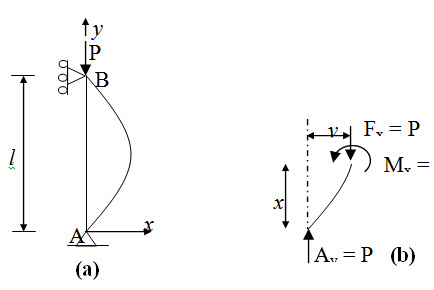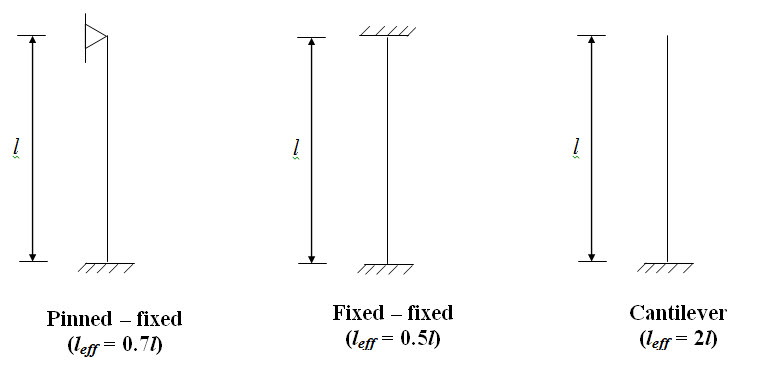Site pages
Current course
Participants
General
MODULE 1. Analysis of Statically Determinate Beams
MODULE 2. Analysis of Statically Indeterminate Beams
MODULE 3. Columns and Struts
MODULE 4. Riveted and Welded Connections
MODULE 5. Stability Analysis of Gravity Dams
Keywords
5 April - 11 April
12 April - 18 April
19 April - 25 April
26 April - 2 May
LESSON 22. Columns and Struts
22.1 Buckling and Stability
Lateral bending of a straight slender member from its longitudinal position due to compression is referred to as buckling. Buckling is encountered in many practical columns. Load at which buckling occurs depends on many factors such as material strength, geometry of the column, end conditions etc. In this module we will learn different methods for determining buckling load of slender columns.
22.2 Euler Load for Columns with Pinned End
Assumptions
Member is prismatic and perfectly straight.
The material is homogeneous and linear elastic.
One end of the member is hinged and the other is restrained against horizontal movement as shown in Figure 22.2a.
The compressive load is acting along the longitudinal axis of the member.
Lateral deformation of the member is small.
 Fig. 22.2.
Fig. 22.2.
From equation of elastic line (lesson 3), we have,.
\[{{{d^2}y} \over {d{x^2}}}=-{{{M_x}} \over {EI}}\] (22.1)
\[\Rightarrow {{{d^2}y} \over {d{x^2}}} + {P \over {EI}}y = 0\] (22.2)
Equation (22.2) is a second order linear differential equation with constant coefficients. Boundary conditions are,
\[y(x = 0) = y(x = l) = 0\] (22.3)
Equations (22.2) – (22.3) define a linear eigenvalue problem, whose solution may be written as,
\[y = A\cos kx + B\sin kx\] (22.4)
where, \[{k^2} = {P / {EI}}\] . Constants A and B may be determined from the boundary conditions (Equation 22.3),
Imposing y(x = 0) = 0 we have A = 0.
Imposing y(x = l) = 0 we have,
\[B\sin kl = 0\] (22.5)
As B ≠ 0 , \[\sin kl = 0 \Rightarrow kl = n\pi \]
where,
Hence,
\[{k^2} = {P \over {EI}} = {{{n^2}{\pi ^2}} \over {{l^2}}}\]
\[\Rightarrow {P_{crn}} = {{{n^2}{\pi ^2}} \over {{l^2}}}EI\] (22.6)
The eigenvalues \[{P_{crn}}\] are the critical loads at which buckling takes place in different modes which are given by,
\[y = B\sin {{n\pi x} \over l}\] (22.7)
The smallest Euler buckling load is (n = 1),
\[{P_E} = {{{\pi ^2}EI} \over {{l^2}}}\] (22.8)
22.3 Euler Load for Columns with Different End Conditions
Equation (22.8) may be recast as,
\[{P_E} = {{{\pi ^2}EI} \over {l_{eff}^2}}\] (22.8)
where, leff is the effective length of the column. For column with both ends hinged, leff = l. Different end condition may increase or decrease the effective length and consequently change the critical buckling load. Effective lengths of column with different end conditions are given below.
 Fig. 22.3.
Fig. 22.3.
Suggested Readings
Yoo, C.H., Lee, S.C. (2011). Stability of Structures: Principles and Applications. Elsevier.
Gere, J.M, Timoshenko S.P. (2010). Theory of Elastic Stability. Second Edition, Tata McGraw - Hill Education.